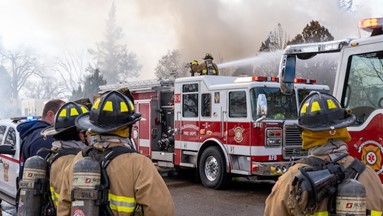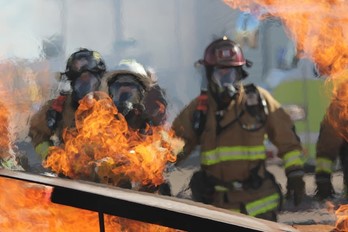Jonathan Paige of New London has over 33 years of experience in firefighting and training, upholding organizational guidelines, offering instructional resources, and maintaining training records for a 70-member career fire department. In the following article, Jonathan Paige discusses how technology has enhanced safety and efficiency in fire and rescue training services.
Firefighting and fire rescue is among the oldest of humanity’s time-honored professions. Thanks to the latest advances in technology, our first responders have new and improved tools at their disposable to battle the flames quickly, efficiently, and, most importantly, safely. From organizational software to drones to artificial intelligence, new innovations that are transforming our world and culture and also having an impact on fire rescue.
Jonathan Paige Discusses Mobile Technology
Like civilians, most firefighters rely on mobile technology as their chief form of communication. Post 9/11, it became clear that public safety might need a more advanced and exclusive network should a large disaster cause a public mobile network to temporarily go down. First Responder Network Authority partnered with AT&T to create just that. Called FirstNet, the network prioritizes first responder communications when commercial networks are overloaded.
Jonathan Paige of New London explains that firefighters also use various apps to complete their tasks, such as tracking personal health training goals, identifying chemicals, and calculating pump pressure. Cloud-based technology also lets them access policy and instructions on the go and on site.
Firefighting Drones
Jonathan Paige of New London reports that drones are becoming more and more popular for public safety efforts. Firefighting drones can serve a variety of purposes, including quickly assessing the area to provide an overall picture of the area, to identify potential hazards, to perform the “search” in search and rescue, and deliver supplies (first aid kits, water, or food) to survivors trapped in unreachable areas. Drones are a wonderful alternative to quickly access areas that would be dangerous for a human firefighter to travel to.
Sonic Fire Extinguishers
New sonic fire extinguishers use sound waves rather than chemicals to put out fires! This is a healthier and cleaner way to put out a fire, as chemical methods can damage property and be dangerous to inhale. Developers are currently experimenting pairing sonic fire extinguishers with drones to combat wild fires, an ever-growing threat posed by climate change.
Technology in Training – Augmented and Virtual Reality
Jonathan Paige of New London says that augmented reality and virtual reality are not just for gaming – they’ve also been incorporated into firefighter training courses, to allow them to “experience” the many elements of a fire situation without putting themselves or any other person or property at risk. While this will complement rather than fully replace live fire training, it can provide a more varied range of scenarios, such as wild fires or building collapses.
Online training tools – such as PowerDMS – can let firefighters complete their training at home on their own time, saving the department time and money.
Artificial Intelligence
Jonathan Paige of New London notes that talk of artificial intelligence is everywhere – it’s truly 2023’s breakthrough technology. Fire rescue is no exception. NASA is developing a technology called the Assistant for Understanding Data through Reasoning, Extraction, and Synthesis, or AUDREY for short, which can collect essential data from a fire and provide a recommended pathway for firefighters to follow while wearing heat sensors to provide further updates.
The data collected includes fire flow paths, timing, the presence of gases, how quickly a fire is developing, and temperatures, and then AUDREY can interpret from there the best course of action.
Currently, AUDREY is still in development and being tested only in controlled burn environments but will hopefully be used by firefighters around the world in due time.
 Electric Fire Trucks
Electric Fire Trucks
Jonathan Paige of New London also reports that regular vehicle drivers are already wrapping their heads around the idea of electric and hybrid vehicles like the Tesla and the Prius, and now Rosenbauer, an Austrian firm, has created the world’s first electric fire truck for the cost of about $1.6 million.
Since electric vehicles need to be charged, rather than filled with gasoline, electric trucks would be especially helpful in urban environments where the trips are shorter, and they can be returned to the fire station in a timely manner for charging.
Workforce Management Software
Jonathan Paige of New London explains that the last technology being implemented in fire departments may also be the simplest. Like so many other businesses, fire departments can take advantage of workforce management software to help schedule shifts and manage schedules.
In Conclusion
Thanks to technological advances such as drones, AI, VR, AR, workforce management software, electric vehicles, sonic fire extinguishers, and more, fire departments are finding ways to operate that are safer, faster, and more efficient.



 Electric Fire Trucks
Electric Fire Trucks


